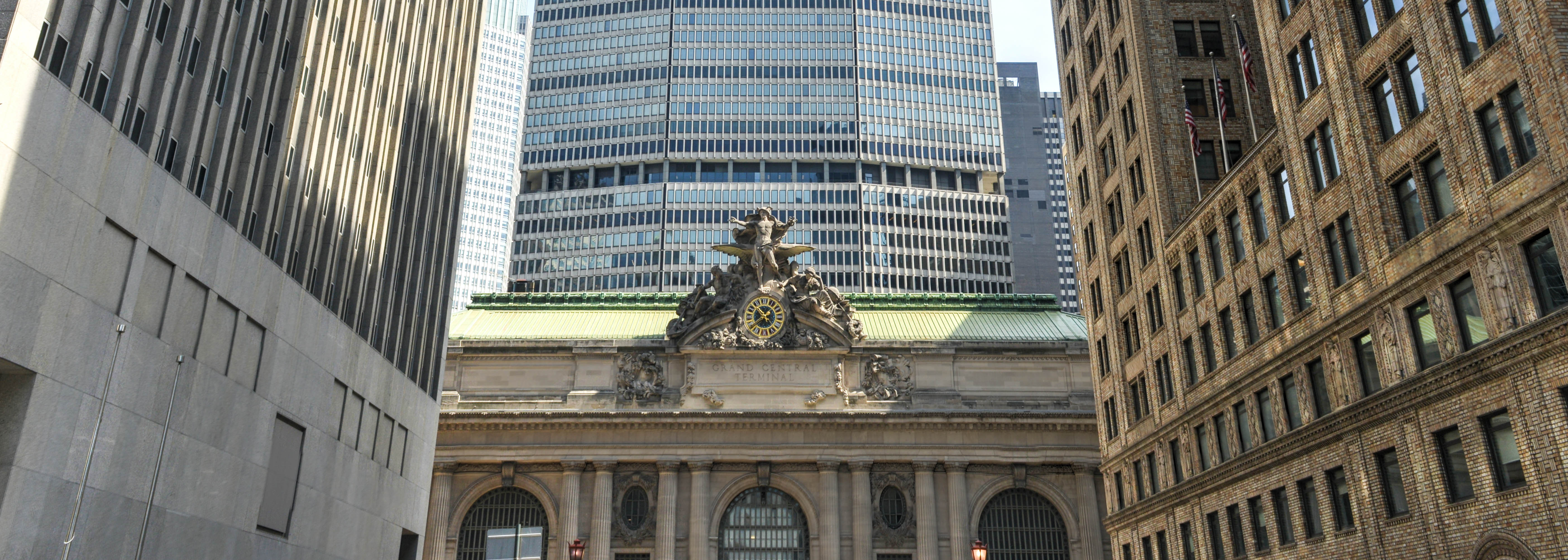Art Deco took hold in the mid-1920s, just as Midtown Manhattan was coming into its own as a commercial and entertainment center. It is not surprising, then, that many of the skyscrapers built during the ‘20s and ‘30s bear the hallmarks of Deco design: stepped silhouettes, geometric and stylized floral embellishments, the use of aluminum and bronze to complement brick and stone. Among Midtown’s most notable examples:
Empire State Building
350 Fifth Avenue (between 33rd and 34th Streets)
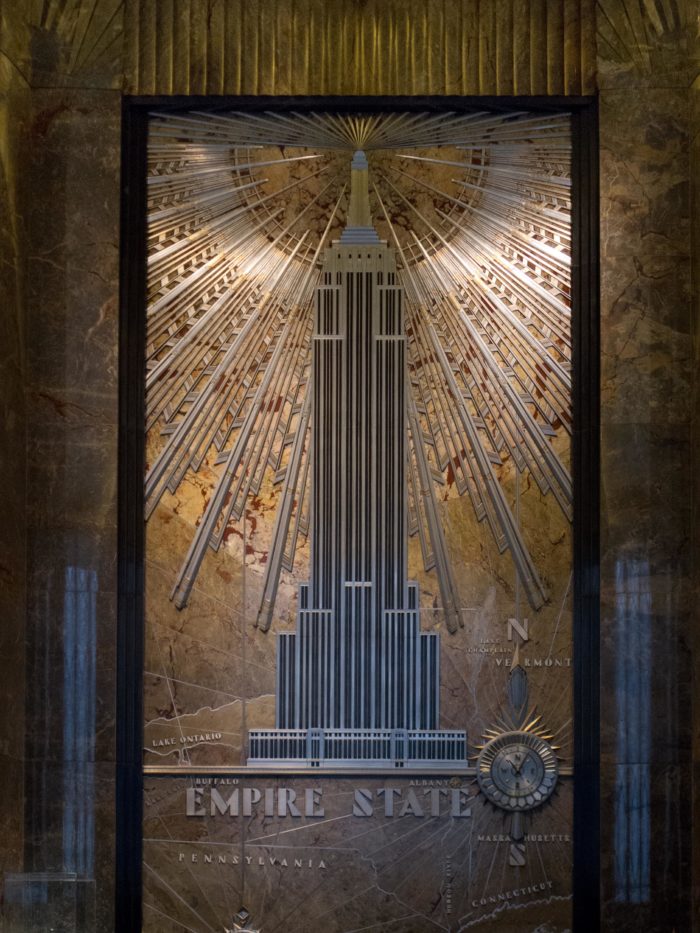
The lobby of the Empire State Building. Image: Carlos Delgado/Wikimedia
Named one of the Seven Wonders of the Modern World in 1994 by the American Society of Civil Engineers (fellow “wonders” include the Panama Canal and the Channel Tunnel), the Empire State Building instantly became a symbol of New York upon its unveiling in 1931. It remained the world’s tallest building until the completion of the original North Tower of the World Trade Center in 1970. The set-back upper floors that give the 102-story building its geometrically tapered silhouette and the building’s spire are perhaps the most distinctively Deco exterior features. Inside, the three-story-tall lobby—restored in 2009 to its original design—is Art Deco at its most extravagant, from the 24-karat gold and aluminum leaf ceiling murals to the aluminum relief wall panel depicting the building itself.
Nelson Tower
450 Seventh Avenue (at 34th Street)
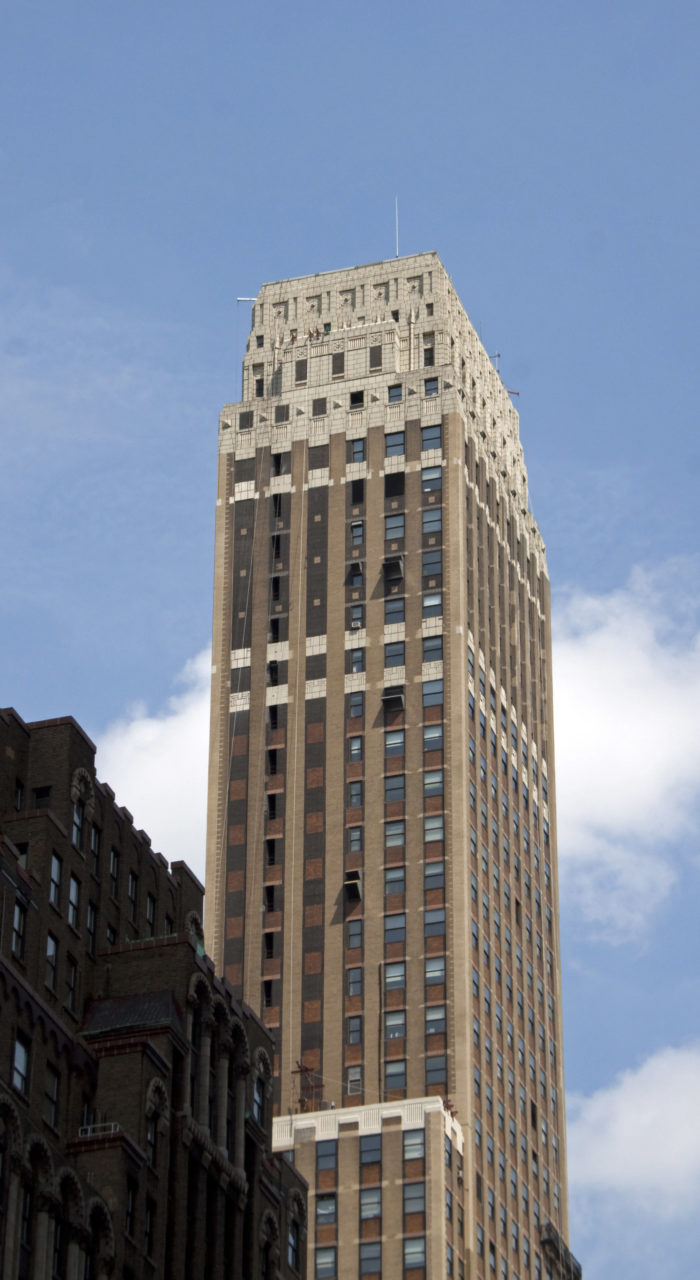
Nelson Tower. Image: Tony Hisgett/Wikimedia
The 46-story Nelson Tower calls to mind a Cubist rendition of a snowcapped mountain: Above the first five stories of white limestone rise more floors of brown brick, with each setback crowned with white limestone and the central shaft topped with five more limestone stories. The largest building in the Garment District when it opened in 1930, it is relatively unadorned by Deco standards, but one could argue that its striking silhouette requires little ornamentation.
New Yorker Hotel
481 Eighth Avenue (between 34th and 35th Streets)
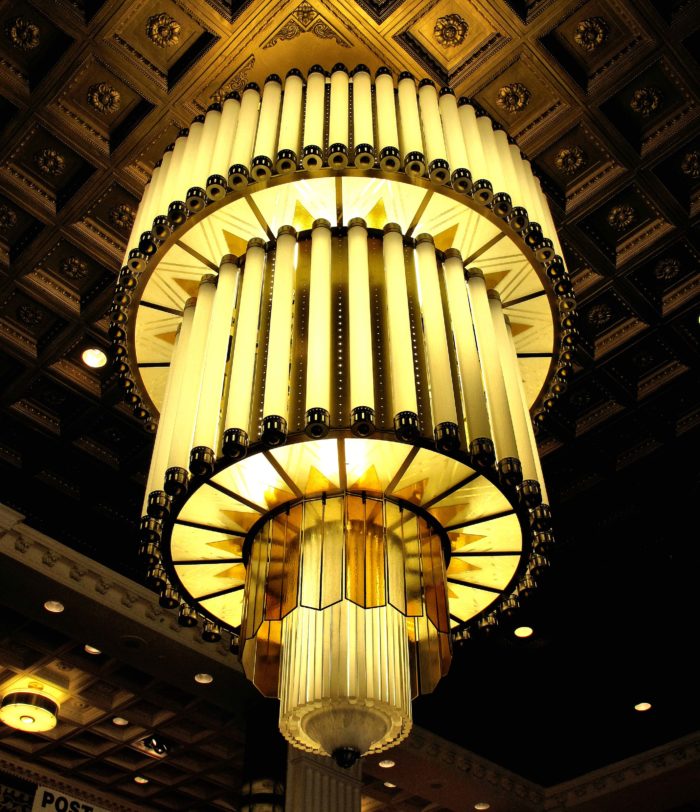
A chandelier at the New Yorker Hotel. Image: Francisco Anzola/Wikimedia
A wealth of setbacks give this 43-story building, now a Wyndham hotel, its indisputably Deco profile. When it opened n 1930, it was the city’s largest hotel and, thanks to its coal-fired boilers and generators, the largest private power plant in the country. The hotel’s notable guests included Fidel Castro, Joan Crawford, and Muhammad Ali, but it seems to be particularly proud to have been the final home of inventor and visionary Nikola Tesla, from 1933 till his death in suite 3327 in 1943. The room has a plaque in his honor, and a second plaque graces the exterior.
American Radiator Building
40 West 40th Street (between Fifth and Sixth Avenues)
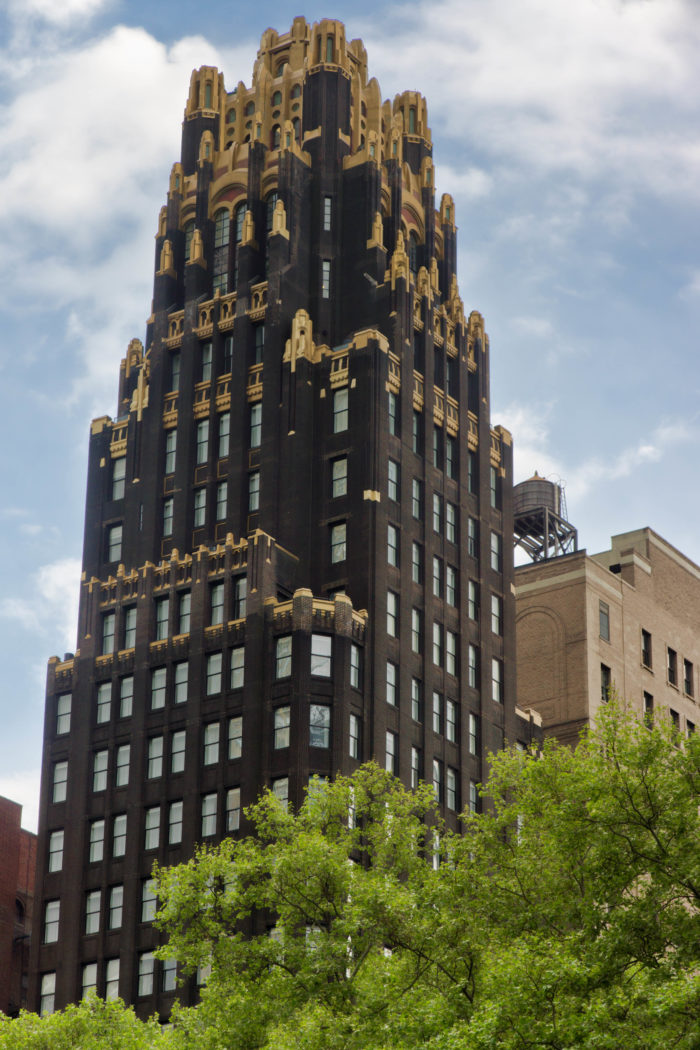
American Radiator Building. Image: Jean-Christophe Benoist/Wikimedia
When it was completed in 1924, the American Radiator Building—now Bryant Park Hotel—was like no other skyscraper in the city. Its black brick exterior and neo-Gothic gilded terracotta tower ornamentations remain its most distinctive features. Architect Raymond Hood, who had previously designed radiator covers for the company, chose black so that the window frames appeared less obtrusive; some have suggested that the color also represented coal, while the bronze plating was meant to reference fire. The building was also the first New York skyscraper designed with exterior lighting to ensure that it remained a dramatic sight even at night. Artist Georgia O’Keeffe memorialized the impact of the building on the evening landscape with her 1927 painting “Radiator Building—Night, New York.”
Rockefeller Center
48th to 51st Streets, between Fifth and Sixth Avenues
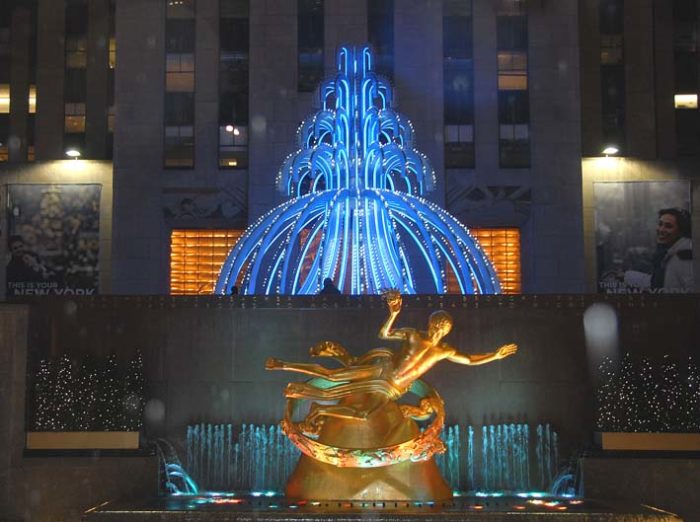
The electric fountain and the statue of Prometheus at Rockefeller Center. Image: public domain/Wikimedia
Nineteen buildings make up the 22-acre complex known as Rockefeller Center. John D. Rockefeller Jr. was the sole financier for what was to become the largest private building project of modern times, which began in 1930. It is difficult to pinpoint the best-known feature of Rockefeller Center. There is the bronze statue of Prometheus by Paul Manship that looks out over the flag-framed plaza, which becomes a skating rink in winter, and the four-story-high bronze status of Atlas by Lee Lawrie on Fifth Avenue, directly across from St. Patrick’s Cathedral. There is Radio City Music Hall, which many do not realize is part of Rockefeller Center. There are the Channel Gardens, with their vibrant blooms and water-spouting dolphins. There is the 70-story 30 Rockefeller Plaza building, home of NBC Studios, the Rainbow Room restaurant, and the Top of the Rock observation deck. And of course, there is the annual Christmas tree.
Fuller Building
41 East 57th Street (at Madison Avenue)
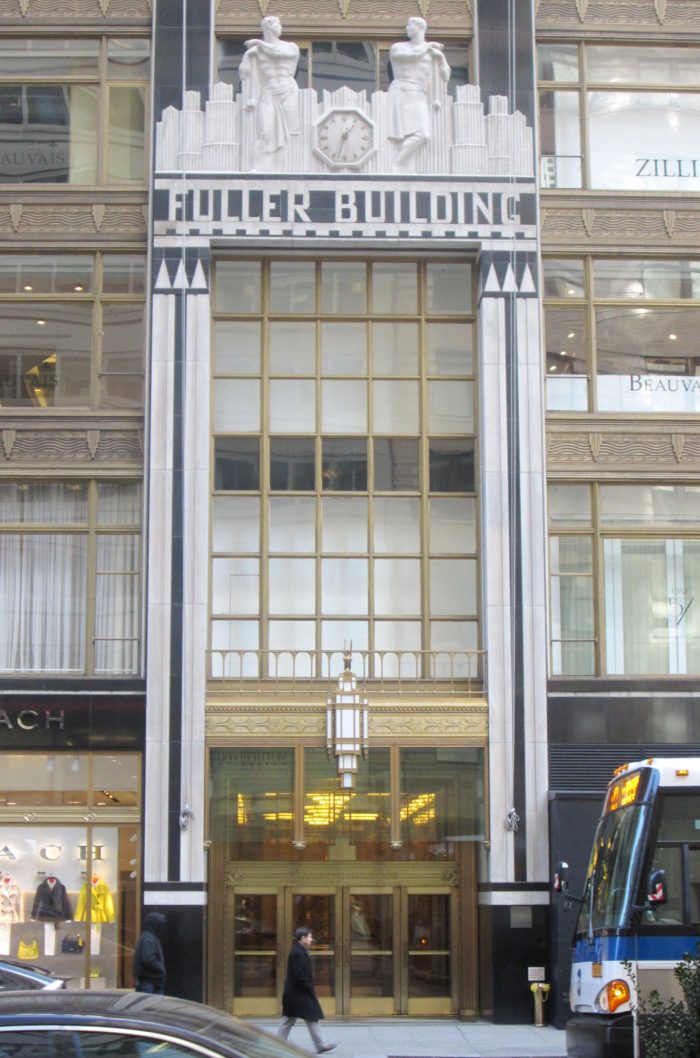
Fuller Building. Image: Beyond My Ken/Wikimedia
The Fuller Construction Company had this building designed for it in the late 1920s and moved into it from another iconic structure, the Flatiron Building, in 1929. The lower 12 floors of this 40-story building were given high ceilings to cater to art galleries, and a number of dealers continue to operate from there, including the Jason McCoy Gallery and the Howard Greenberg Gallery. The facade of the lower portion of the building differs from the upper, with black granite facing in contrast to the limestone of the set-back upper stories, though the black granite is repeated in the geometric patterns of the tower. A sculptural panel by Elie Nadelman depicting construction workers towering above a skyline surrounds a clock atop the three-story entrance. Tributes to the construction industry continue in the lobby: The floors include mosaics touting significant structures built by Fuller, and relief images of construction workers in action adorn the bronze elevator panels.
Essex House
160 Central Park South (between Sixth and Seventh Avenues)
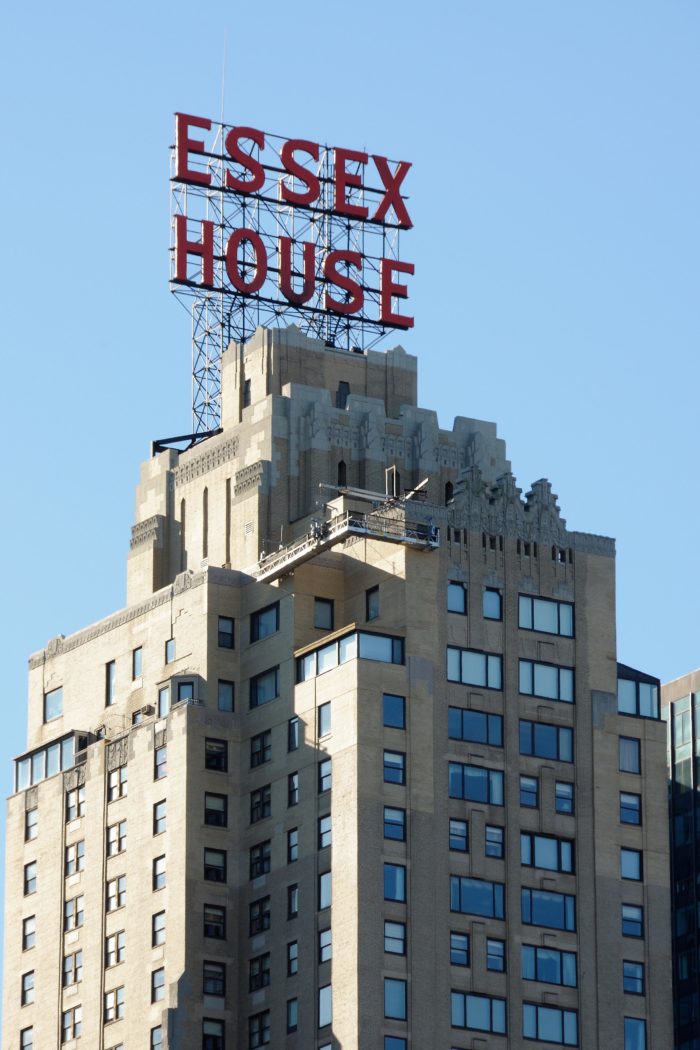
Essex House. Image: Ralph Daily/Flickr
The beginnings of the Essex House—now JW Marriott Essex House New York—were not auspicious: Construction began the day after the October 1929 stock-market crash. The building has changed ownership multiple times since its completion in 1930. Today it houses condo units as well as a hotel, but it retains its Deco majesty.
Fluted black marble columns, lavishly embellished golden elevator doors, and a gold-framed coffered ceiling distinguish the lobby. While the numerous decorated setbacks were no doubt meant to help the exterior stand out, the building is probably better known for the six-story-high sign on its roof spelling out “Essex House” in bold red letters, which was added in 1932.


